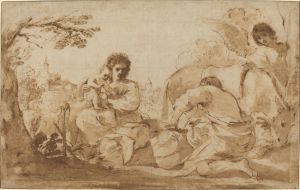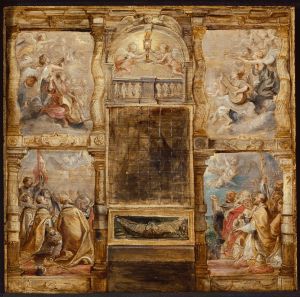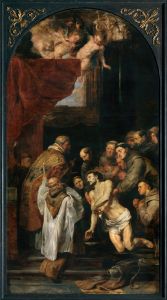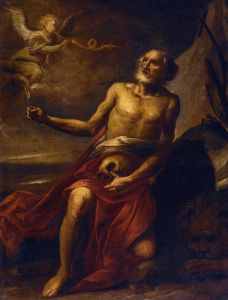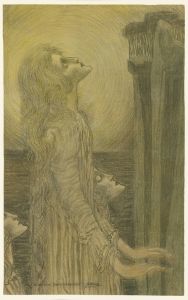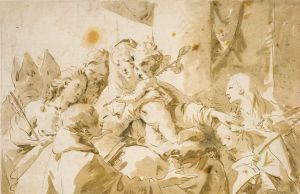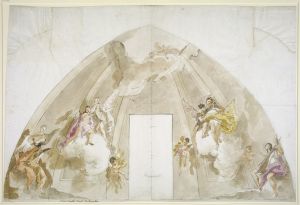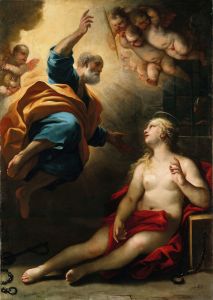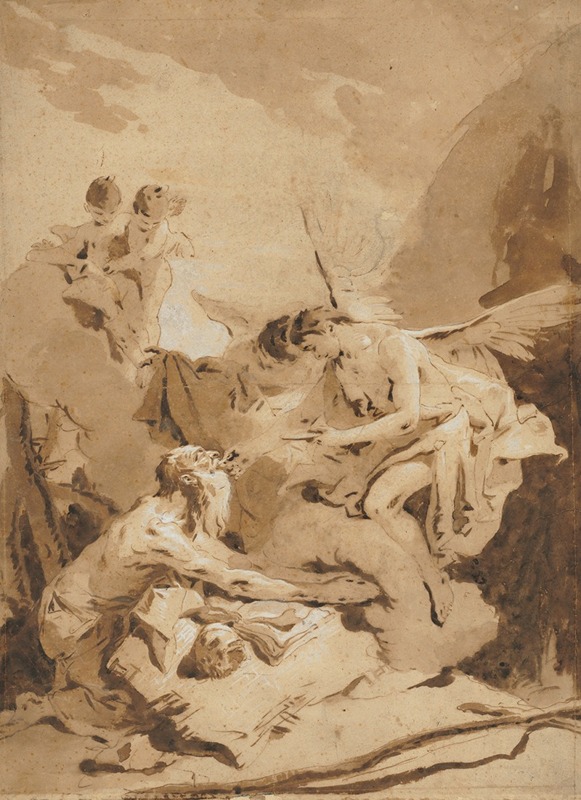
The Last Communion of St. Jerome
A hand-painted replica of Giovanni Battista Tiepolo’s masterpiece The Last Communion of St. Jerome, meticulously crafted by professional artists to capture the true essence of the original. Each piece is created with museum-quality canvas and rare mineral pigments, carefully painted by experienced artists with delicate brushstrokes and rich, layered colors to perfectly recreate the texture of the original artwork. Unlike machine-printed reproductions, this hand-painted version brings the painting to life, infused with the artist’s emotions and skill in every stroke. Whether for personal collection or home decoration, it instantly elevates the artistic atmosphere of any space.
"The Last Communion of St. Jerome" is a notable painting by the Italian artist Giovanni Battista Tiepolo, created in 1745. Tiepolo, born in Venice in 1696, is renowned for his vibrant and dramatic compositions, which are characteristic of the late Baroque period. This particular work is an excellent example of his skill in capturing religious themes with emotional intensity and dynamic movement.
The painting depicts the final communion of St. Jerome, one of the four great Latin Fathers of the Church and the translator of the Bible into Latin (the Vulgate). St. Jerome is shown receiving the Eucharist, a significant moment that underscores his devout faith and dedication to the Christian doctrine. The scene is set in a grand, yet somber atmosphere, emphasizing the solemnity of the sacrament.
Tiepolo's use of light and color in "The Last Communion of St. Jerome" is masterful. He employs a dramatic chiaroscuro technique, where the contrast between light and dark areas enhances the emotional impact of the scene. The light appears to emanate from the Eucharist itself, symbolizing divine presence and grace. This illumination highlights the central figures, drawing the viewer's attention to the pivotal moment of communion.
The composition of the painting is carefully arranged to guide the viewer's eye through the scene. St. Jerome is positioned centrally, kneeling in a humble posture, his gaunt figure and aged features conveying his ascetic lifestyle and spiritual fervor. Surrounding him are various figures, including clergy and attendants, who witness the sacred event with reverence. Their gestures and expressions contribute to the overall narrative, emphasizing the significance of the moment.
Tiepolo's attention to detail is evident in the intricate rendering of the figures' garments and the architectural elements of the setting. The rich textures and flowing drapery add a sense of movement and life to the composition. The background features classical architectural elements, which not only provide a sense of grandeur but also situate the scene within a timeless, sacred space.
"The Last Communion of St. Jerome" is housed in the Pinacoteca di Brera in Milan, Italy. The painting is part of the museum's extensive collection of Italian Renaissance and Baroque art. It remains a significant work within Tiepolo's oeuvre, showcasing his ability to blend religious devotion with artistic innovation.
Giovanni Battista Tiepolo's contribution to the art world extends beyond this painting. He was a prolific artist, known for his frescoes, altarpieces, and mythological scenes. His works can be found in numerous churches, palaces, and museums across Europe. Tiepolo's influence on the development of European art is profound, as he bridged the gap between the Baroque and the emerging Rococo styles.
In summary, "The Last Communion of St. Jerome" by Giovanni Battista Tiepolo is a powerful and evocative representation of a key moment in Christian tradition. Through his expert use of light, color, and composition, Tiepolo captures the spiritual intensity and reverence of St. Jerome's final communion, making it a lasting masterpiece of religious art.





